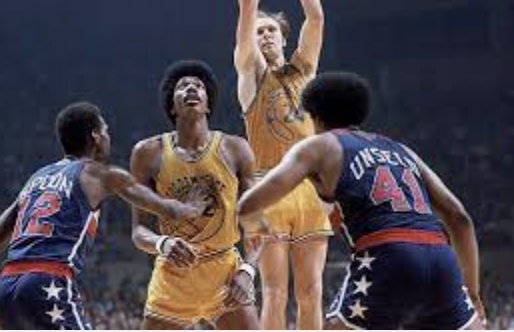There is something truly obscene about activity at the top of the economic spectrum these days.
I’m going to start out as if I’m attacking big salaries for athletes, but that’s really just an introduction and an example.
Shooting guard Bradley Beal has agreed to a contract to remain with the NBA Washington Wizards for five years. Bradley is a great player, but he has never even led the Wizards to the Eastern Conference Finals. He’s reportedly getting $251 million, which averages out to $50.2 million per season.
Consider that the Wizards play 41 home games at Capital One Arena, which has a capacity of 20,000 for basketball. If the Wizards sell out every game, which they don’t, that would be a season attendance of 820,000. That means that $61.22 of every ticket would go to pay the salary of just one player.
Of course ticket revenues are only part of the Wizards’ gross income, but still. …
In the early 1960s, the average NBA player made about $15,000. According to the Census Bureau, the average family income in the U.S. was $5,600.Starting to get the picture? In the season just ended, the average NBA player’s salary was $7.3 million. Not Bradley Beal, but still pretty good.
In the mid ’90s I was covering minor league baseball. The manager of the team I covered had been a solid major leaguer — not a star but a starting infielder — just before salaries went completely nuts. He responded to a question I asked him by saying he had made about $7 million in his career and had managed to save or invest about half of it.
A smart guy.
He had put himself in position — and he was 37 the summer I knew him — where he never had to work another day if that was the life he chose.
That’s fine. If you’re good enough to be a major leaguer for 10 years, that’s something special. He was never one of the highest-paid players on his team, but he was an important cog in its success.
No matter what he made — and no matter what Beal makes — the guys who sign the checks make more. Ted Leonsis is the majority owner of the Wizards, and he is a billionaire.
The average seat at a Wizards game in 2020-21, the most recent statistic available, was $155. That includes so-called nosebleed seats. Not quite as expensive as the New York Knicks at $186, but remember, most people don’t go to games alone. The price of an evening at a game approaches four figures pretty quickly.
I actually remember going to Game Four of the NBA Finals in 1975 — Washington vs. Golden State — and the two tickets ran me $20. Total, not apiece.

The problem is, there’s just too damn much money out there, and working class people aren’t 10 times better off than they used to be — or even two times.
Meanwhile, billionaires’ wealth increases almost exponentially. In the 1950s and ’60s, working class people could actually afford to buy houses. My wife and I owned a home in a very nice California neighborhood. She bought it in 1991 for $330,000. We sold it in 2008 for $760,000.
Sound good?
Wait for it.
Real-estate site Zillow.com lists its current value above $1.6 million.
My parents bought their suburban Virginia home for $25,000 in 1962. Their estate sold it last year for $650,000.
This is all well and good for people who own homes, but people like my close friend in California never did well enough to buy a house. He has what should be considered an upper middle-class job and at best a lower middle-class lifestyle.
More and more people are slipping below the waters in what is almost a new feudalism. For every Bradley Beal, there are a thousand people who will never have a day they don’t have to worry about money.
As I’ve said before, you could adapt an old Beach Boys song …
“Everybody’s gone serf-in, Serf-in USA.”

